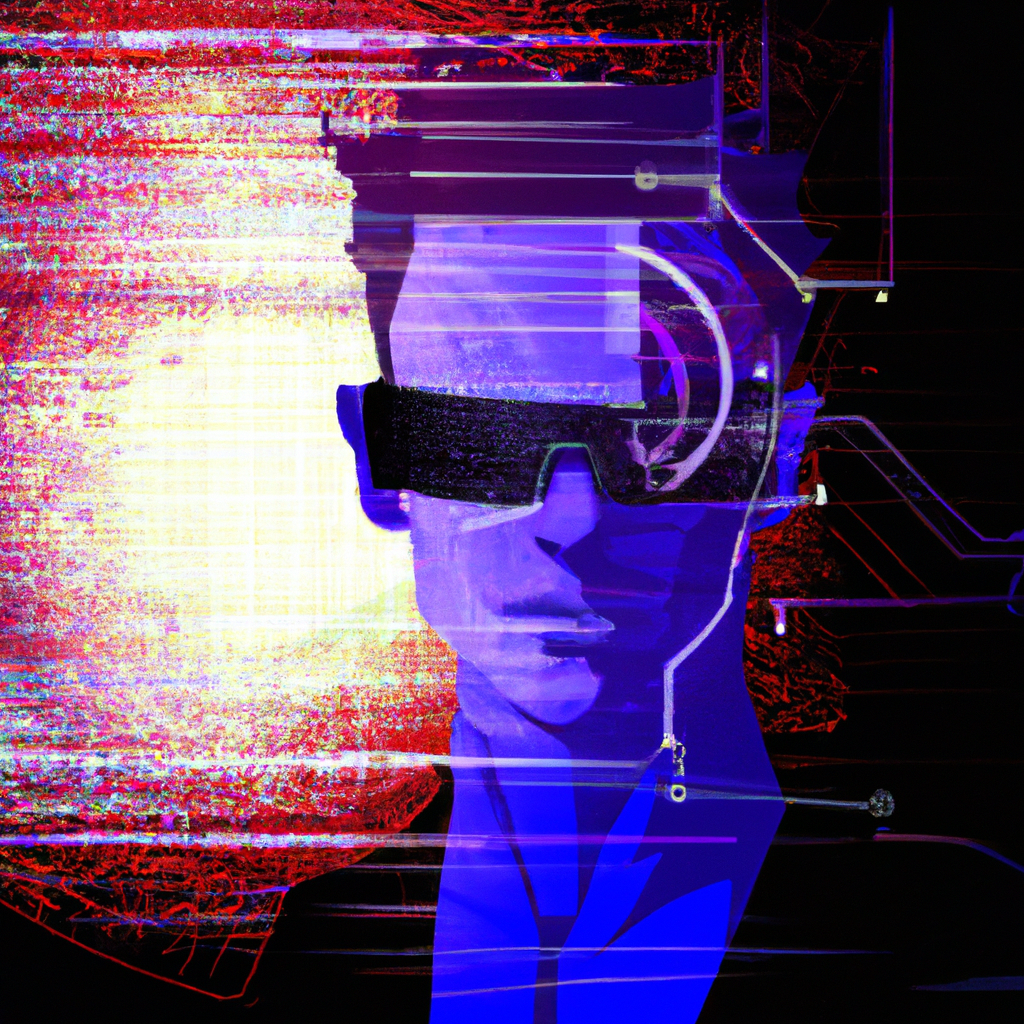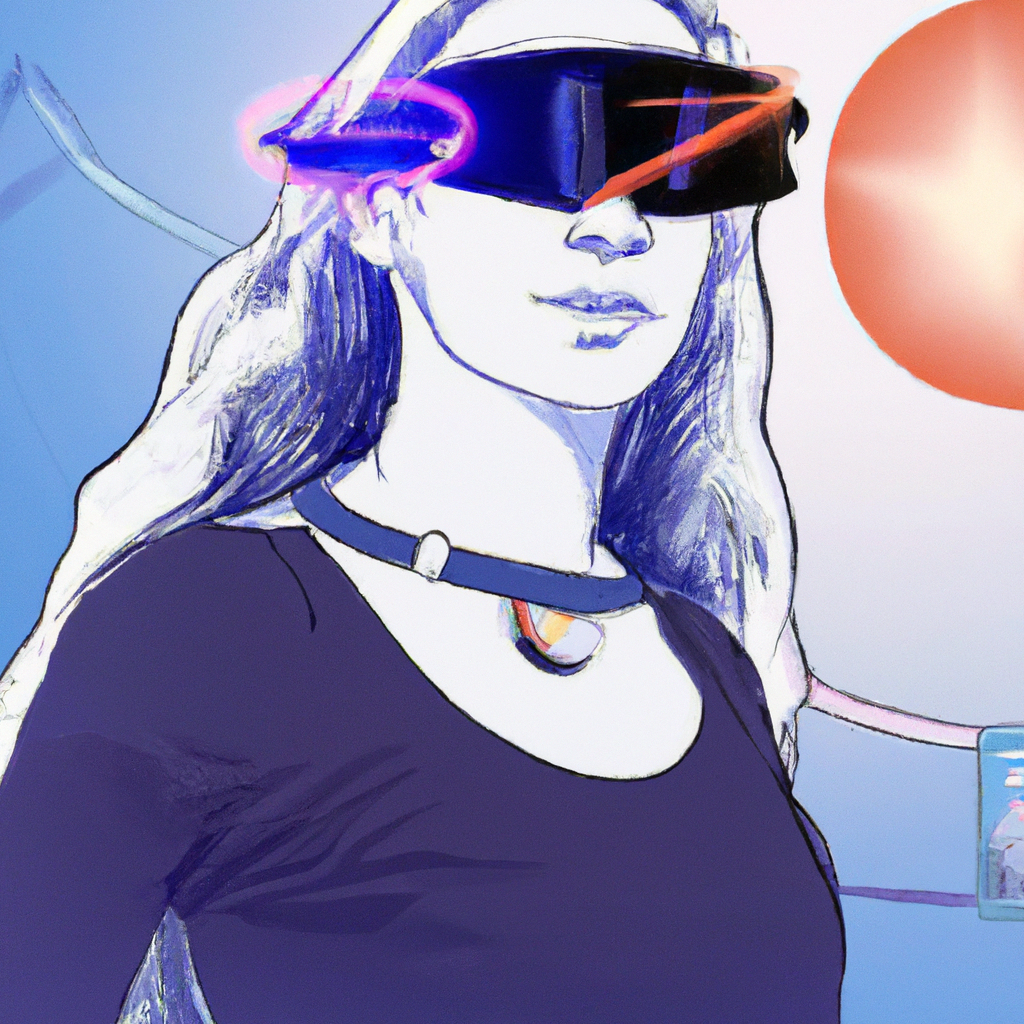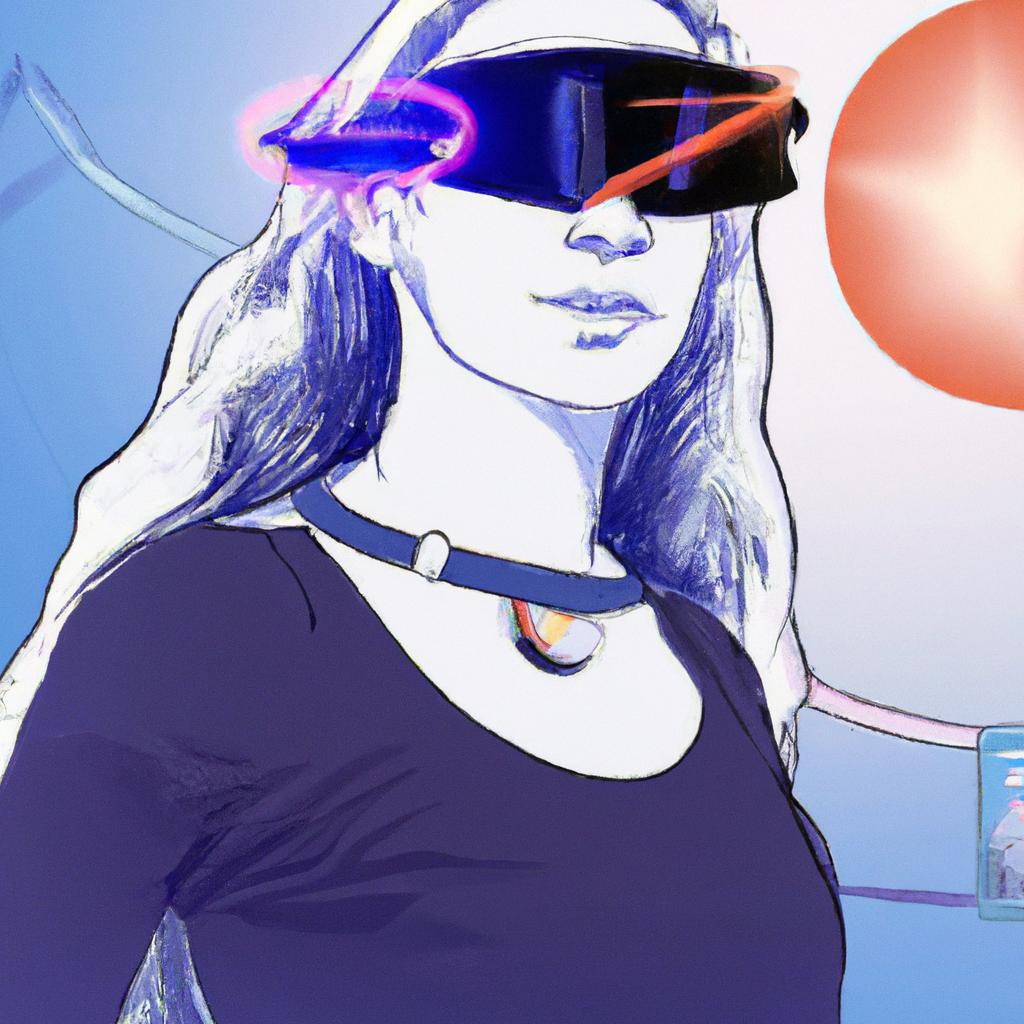Imagine a world where you can see things that aren’t really there, where virtual objects blend seamlessly with the real world, and where you can interact with digital information in ways never thought possible. Welcome to the world of augmented reality (AR), a rapidly evolving technology that is revolutionizing the way we perceive and interact with our surroundings. In this article, we will explore the incredible ways AR is changing the way we see the world, from enhancing our everyday lives to transforming entire industries. Get ready to have your perception of reality altered in the most exciting and fascinating ways imaginable.
Understanding Augmented Reality
Definition of Augmented Reality
Augmented reality (AR) is an immersive technology that combines computer-generated images, sounds, and information with the real-world environment. It overlays virtual elements onto the physical world, enhancing our perception of reality. Unlike virtual reality (VR), which creates a completely virtual environment, AR enhances our existing reality by adding virtual elements in real-time.
The Science Behind AR
Augmented reality relies on a combination of advanced technologies to create its immersive experiences. It utilizes computer vision, which analyzes and understands the real-world environment through cameras and sensors. Simultaneous Localization and Mapping (SLAM) technology enables AR devices to track and map the user’s movement in real-time. Additionally, image recognition and processing techniques allow AR devices to recognize and interact with physical objects.
AR vs VR: Differences and Similarities
While both augmented reality and virtual reality offer immersive experiences, there are significant differences between the two. VR fully replaces the real world with a simulated environment, while AR overlays virtual elements on top of the real world. AR allows users to see and interact with the real environment, whereas VR isolates users from the real world. However, both AR and VR share the goal of immersing users in digital experiences, offering unique ways to interact with virtual content.
History and Evolution of AR
Early Developments of AR
The concept of augmented reality dates back to the 1960s, with the invention of “The Sword of Damocles.” This head-mounted display system allowed users to see simple wireframe objects overlaid onto their vision. In the 1990s, the term “augmented reality” was coined, and research in the field expanded. The first commercial AR system, known as “Virtual Fixtures,” was developed by the U.S. Air Force. The late 2000s witnessed the emergence of mobile AR applications, such as location-based services and marker-based AR.
Recent Innovations in AR Technology
In recent years, there has been a surge in technological advancements that have propelled the growth of AR. The introduction of high-resolution cameras and sensors in smartphones has made AR accessible to a wide audience. Additionally, advancements in computer vision and SLAM technology have improved the accuracy and reliability of AR experiences. Furthermore, the development of wearable smart glasses has opened up new possibilities for hands-free AR interactions.
Influential Companies in the AR Industry
Several companies have played a key role in shaping the AR industry. One notable example is Microsoft, with its HoloLens smart glasses. HoloLens offers spatial mapping and gesture recognition capabilities, allowing users to interact with virtual objects in their real-world environment. Another influential company is Magic Leap, which focuses on creating lightweight, wearable AR devices. Magic Leap’s technology utilizes light field displays to create realistic virtual objects that blend seamlessly with the real world.

AR Devices and Platforms
Display Devices for AR: Smartphones and Smart Glasses
One of the most widely used devices for AR is the smartphone. With powerful processors, high-resolution cameras, and advanced sensors, smartphones provide a convenient and accessible platform for AR applications. Users can experience AR through their smartphone screens, overlaying virtual content onto their real-world environment. Smart glasses, on the other hand, offer a more immersive and hands-free AR experience. They come in various forms, from lightweight augmented reality glasses to more advanced headsets like Microsoft’s HoloLens.
AR Operating Systems and Software
To support AR applications, various operating systems and software platforms have emerged. Apple’s ARKit and Google’s ARCore are two notable examples of AR software development kits (SDKs) that enable developers to create AR experiences for their respective platforms. These SDKs provide tools for motion tracking, environment mapping, and scene understanding, allowing developers to build AR apps that seamlessly blend virtual content with the real world.
Major Players in AR Hardware Development
Several major players are actively involved in the development of AR hardware. Apple has made significant strides with its ARKit and AR glasses project, aiming to integrate AR capabilities into its ecosystem. Facebook’s Oculus Rift and Oculus Quest offer VR experiences but also have the potential for AR applications. Additionally, companies like Google, Microsoft, and Meta have invested in the development of AR hardware, pushing the boundaries of what is possible in the field.
AR Applications in Daily Life
AR Apps for Lifestyle, Education, and Entertainment
AR has made its way into various aspects of daily life. In the realm of lifestyle, AR apps can provide virtual try-on experiences for shopping, allowing users to see how clothes or accessories would look on them without trying them on physically. In education, AR apps can bring interactive and immersive learning experiences, allowing students to explore virtual worlds or visualize complex concepts. In entertainment, AR games and apps provide engaging and interactive experiences, blurring the line between the digital and physical worlds.
AR in Social Media and Advertising
social media platforms have embraced augmented reality, providing users with tools to create and share AR content. Snapchat’s AR lenses, for instance, allow users to overlay virtual filters and effects onto their photos and videos. Instagram also offers AR features like face filters and augmented reality effects. In advertising, AR has the potential to revolutionize the way brands engage with consumers. AR advertisements can provide interactive experiences, allowing users to visualize products in their real-world environment before making a purchase.
Augmenting the Shopping Experience with AR
AR has the potential to transform the shopping experience by offering virtual try-on capabilities, allowing users to see how products will look in their homes before purchasing. For example, furniture retailers can use AR apps to create virtual showrooms, allowing customers to visualize how different pieces of furniture would fit and look in their living spaces. This not only enhances the shopping experience but also reduces the likelihood of buyer’s remorse.

AR in Professional Context
AR in Medicine and Health Care
Augmented reality has found numerous applications in the medical field. Surgeons can utilize AR technology to overlay virtual guides, x-ray images, or patient data directly onto the surgical site, improving accuracy and precision during procedures. AR can also be used in medical training, allowing students to practice procedures in a simulated environment before performing them on real patients. Additionally, AR can assist in remote healthcare consultations, where healthcare professionals can use AR to guide patients through self-examinations or follow-up procedures.
AR in Architecture and Construction
AR has the potential to revolutionize the architecture and construction industries. Architects can use AR to visualize and present their designs in a real-world context, allowing clients to experience and provide feedback on the proposed structures. Construction workers can benefit from AR by overlaying virtual blueprints and instructions onto the physical environment, improving efficiency and reducing errors. Furthermore, AR can assist in maintenance and repair by providing real-time instructions and visual cues to technicians.
AR in Automotive and Manufacturing Industry
AR is making significant advancements in enhancing productivity and safety in the automotive and manufacturing sectors. In automotive manufacturing, AR can provide assembly line workers with real-time instructions and feedback, ensuring accurate and efficient assembly processes. AR can also assist automobile technicians in diagnosing and repairing vehicles by overlaying instructions and virtual diagnostics onto the physical components. Moreover, AR can enhance user manuals and product assembly instructions, making them more intuitive and interactive.
AR and Art
The Intersection of AR and Contemporary Art
Augmented reality has opened up new possibilities for artistic expression. Artists can create immersive and interactive experiences by overlaying virtual elements onto physical artworks. By combining traditional art forms with digital content, AR blurs the boundaries between the tangible and virtual, offering viewers a new perspective and engagement with art. AR art installations can transform physical spaces, inviting viewers to explore and interact with virtual sculptures, animations, and soundscapes.
AR Museums and Exhibitions
Museums and galleries are increasingly incorporating augmented reality into their exhibitions to enhance visitor experiences. AR can provide additional information, interactive experiences, and contextual understanding of the artworks on display. By using AR, museums can breathe life into historical artifacts, allowing visitors to see them as they appeared in the past. AR-guided tours can also enrich the museum experience, offering virtual guides and augmented reality information overlays.
Impact of AR on Creative Expression and Experience
AR technology has had a profound impact on creative expression and the way audiences engage with art. Artists now have the ability to create dynamic and interactive artworks that transcend the limitations of traditional mediums. Viewers can actively participate in the artistic experience by using AR-enabled devices to explore virtual layers of content and narratives embedded within the artwork. This interactive and immersive aspect of AR has the potential to redefine the relationship between the artist, artwork, and audience.

AR in Gaming Industry
Evolution of AR Games
The gaming industry has witnessed a significant evolution in augmented reality games. Early examples, such as Pokémon Go, captured the world’s attention by allowing players to catch virtual creatures in the real world using their smartphones. These location-based AR games brought virtual elements into the physical environment, encouraging exploration and interaction. As technology advanced, more immersive AR gaming experiences were developed, utilizing headsets and smart glasses to overlay virtual worlds onto the player’s real-world surroundings.
Most Popular AR Games and their Impact
Pokémon Go, developed by Niantic, became a cultural phenomenon, demonstrating the immense potential of AR gaming. Players could explore their surroundings, catching virtual Pokémon and battling with other players in designated locations. This innovative blend of gaming and augmented reality sparked a worldwide gaming revolution. Other popular AR games, such as Harry Potter: Wizards Unite and Minecraft Earth, have built upon this success, offering players immersive experiences and expanding the boundaries of traditional gaming.
Future Prospects of AR in Gaming
The future of AR gaming holds exciting possibilities. With advances in technology, AR gaming experiences will become more seamless and realistic. The integration of virtual reality and augmented reality could create entirely new gaming genres and experiences. Multiplayer AR games may allow players to interact and collaborate in shared virtual worlds overlaid onto their real environment. Furthermore, advancements in haptic feedback and gesture recognition could enhance the physicality and immersion of AR gaming, creating truly transformative experiences.
Concerns and Challenges in AR
Privacy and Security Concerns in AR
As AR technology becomes more prevalent, privacy and security concerns are paramount. AR devices and apps have the potential to gather and store large amounts of personal data, such as location, behavior patterns, and even biometric information. Companies must prioritize user privacy and implement robust security measures to prevent unauthorized access and misuse of personal information. Additionally, AR can present ethical challenges when it comes to the collection and use of data, requiring careful consideration and regulation.
Technical Limitations and Challenges
Despite significant advancements, AR technology still faces various technical limitations and challenges. One common limitation is the size and weight of AR devices, hindering comfort and usability for extended periods. Battery life is another challenge, as AR devices require substantial power to run complex real-time processing. Additionally, the quality and accuracy of augmented content still need improvement to seamlessly blend virtual and real-world elements. Overcoming these technical hurdles is crucial for the widespread adoption and success of AR.
Health and Psychological Issues
Extended use of AR devices can have potential health and psychological implications. Eye strain and fatigue are common issues associated with prolonged AR use due to the continuous focusing and re-focusing required to perceive both virtual and real-world elements. Motion sickness and disorientation can also occur when there is a disconnect between the user’s visual perception and motion detection. Moreover, psychological effects, such as addiction and a blurred sense of reality, can arise when individuals become overly immersed in augmented environments. Proper guidelines and user awareness are essential to mitigate these risks.

The Future of AR
Projected Growth of AR Market
The future of augmented reality looks promising, with significant growth projected for the AR market. The global AR market is estimated to reach USD 132.9 billion by 2026, driven by advancements in AR technology, increasing adoption in various industries, and growing demand for immersive digital experiences. The widespread use of AR-enabled smartphones, coupled with the development of innovative AR applications, will contribute to the market’s expansion. Additionally, the integration of AR with other emerging technologies, such as artificial intelligence and 5G connectivity, will fuel further growth.
Potential Developments in AR Technology
The advancement of AR technology will continue to push boundaries and introduce new possibilities. Improved display technologies, such as holographic displays and transparent screens, will enhance the realism of AR experiences. Natural language processing and voice recognition capabilities will enable seamless interaction with AR content, reducing the reliance on physical input devices. Advancements in object recognition and tracking will allow for more accurate and realistic virtual object placement. Additionally, the integration of AI algorithms will enable AR devices to understand and respond to real-world environments in more sophisticated ways.
Ways AR Could Change Everyday Life in the Future
Augmented reality has the potential to transform many aspects of our everyday lives. In education, AR can revolutionize traditional teaching methods, providing interactive and immersive learning experiences. In healthcare, AR can enhance patient care and surgical procedures, improving accuracy and efficiency. In entertainment, AR can create more immersive and engaging gaming and media experiences. AR can also redefine the retail industry, enabling virtual try-on and personalized shopping experiences. Furthermore, AR can revolutionize social interactions, enabling virtual communication and collaboration in shared augmented environments.
Conclusion: The Implication of AR in our Perception of Reality
How AR is Altering our Understanding of Reality
Augmented reality is altering our understanding of reality by blurring the line between the virtual and physical worlds. AR enables us to perceive and interact with virtual content seamlessly integrated into our real-world environment. It challenges our traditional notions of reality, expanding our imagination and possibilities. AR experiences can create a sense of wonder by enhancing our perception and bringing virtual elements to life. As AR technology continues to advance, our understanding of reality will continue to evolve, creating new paradigms and redefining our relationship with the world around us.
The Role of AR in Shaping our Future
Augmented reality plays a pivotal role in shaping our future by revolutionizing multiple industries and transforming various aspects of our daily lives. AR has the potential to enhance education, healthcare, entertainment, retail, and many other sectors, offering new possibilities and improving experiences. By merging digital and physical worlds, AR can bridge gaps and create interconnected environments that enable seamless interaction and collaboration. As AR technology continues to develop, it will play an increasingly important role in the way we work, communicate, learn, and experience the world.
Augmented Reality: Less of a Gimmick, More of a Tool
Augmented reality is no longer just a gimmick or a novelty; it is becoming an indispensable tool with immense potential. AR is moving beyond entertainment and gaming, finding real-world applications in various industries. It is transforming the way we perceive and interact with the world, offering innovative solutions to real-world problems. As the technology continues to evolve, augmented reality will become an integral part of our everyday lives, empowering us to explore new realms of creativity, productivity, and understanding. The future of augmented reality is bright, and its impact on society is bound to be profound.











